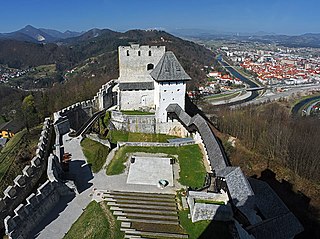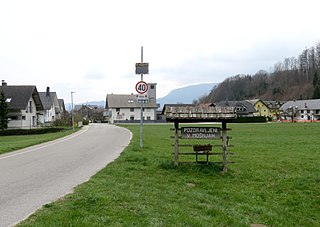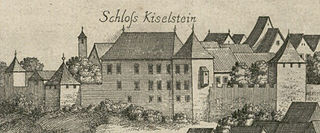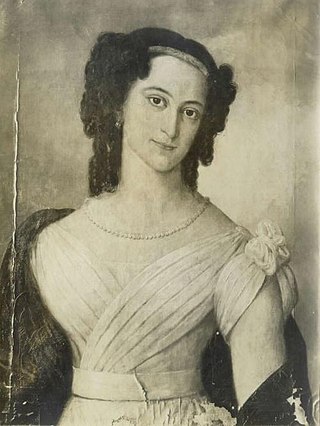
Celje is the fourth-largest city in Slovenia. It is a regional center of the traditional Slovenian region of Styria and the administrative seat of the City Municipality of Celje. The town of Celje is located below Upper Celje Castle at the confluence of the Savinja, Hudinja, Ložnica, and Voglajna rivers in the lower Savinja Valley, and at the crossing of the roads connecting Ljubljana, Maribor, Velenje, and the Central Sava Valley. It lies 238 m (781 ft) above mean sea level (MSL).

Radeče is a small town in the Lower Sava Valley in eastern Slovenia. It is located in the Sava Hills on the right bank of the Sava River at the confluence with Sopota Creek. It is the seat of the Municipality of Radeče and part of the traditional province of Lower Carniola. The town and the municipality are now included in the Lower Sava Statistical Region; until January 2014 they were part of the Savinja Statistical Region.
Trebnje is a town in southeastern Slovenia.

Ljubljana Castle is a castle complex standing on Castle Hill above downtown Ljubljana, the capital of Slovenia. It is a key landmark of the town. Originally a medieval fortress, it was probably constructed in the 11th century and rebuilt in the 12th century. It acquired its present outline with an almost complete overhaul in the 15th century, whereas the majority of the buildings date to the 16th and 17th centuries. Initially a defense structure and since the first half of the 14th century the seat of the lords of Carniola, it was since the early 19th century used for various other purposes and today is used as a major cultural venue.

Brežice Castle is a 16th-century castle in the town of Brežice, in southeastern Slovenia, at the street address Cesta prvih borcev 1.

Celje Castle is a castle ruin in Celje, Slovenia, formerly the seat of the Counts of Celje. It stands on three hills to the southeast of Celje, where the river Savinja meanders into the Laško valley. Today, the castle is in the process of being restored. It was once the largest fortification on Slovenian territory.
Gorenje Kamenje is a settlement in the hills north of the town of Novo Mesto in southeastern Slovenia. The entire City Municipality of Novo Mesto is part of the traditional region of Lower Carniola and is now included in the Southeast Slovenia Statistical Region.

Navje Memorial Park, the redesigned part of the former St. Christopher's Cemetery, is a memorial park in Ljubljana, the capital of Slovenia. It is located in the Bežigrad district, just behind the Ljubljana railway station.

Tvrdalj Castle is a castle in Stari Grad, on the island of Hvar, Croatia.

Mošnje is a village in the Municipality of Radovljica in the Upper Carniola region of Slovenia.

The Baumkircher Tower, also known as Tabor Castle or Lower Castle, is a defensive tower or small castle located in the town of Vipava in southwestern Slovenia.

Kieselstein Castle, also known as Khislstein, is a 13th-century castle in the city of Kranj, in the Upper Carniola region of Slovenia.
Koprivnik Castle is a castle ruin above the village of Sveta Trojica, near Moravče in central Slovenia.

Leskovec Castle or Turn Castle is a 15th-century castle north of the village of Leskovec pri Krškem, southeastern Slovenia. It has been redesigned in the 16th and the 18th centuries.

Vipava Castle is a castle ruin above the town of Vipava in the Municipality of Vipava in southwestern Slovenia.

Mirna is a nucleated village and a minor economic centre in central Lower Carniola, Slovenia. It is the largest settlement of the Mirna Valley and the seat of the Municipality of Mirna. It is situated at the crossing of regional roads and a confluence of several creeks with the Mirna River, along the railway line linking Sevnica and Trebnje.

Velenje Castle is a well-preserved castle in Velenje, Slovenia that was owned by the Kunšperk family, followed by their Ptuj relatives and the Lichtenberg family. The castle houses a museum of art and culture.

The Volčji Potok Arboretum was opened to the public in 1952. It originally formed part of the Souvan family estate in 1885, which was taken over by the University of Ljubljana in 1952 and legally declared a place of cultural and natural heritage of national importance. Now independent of the university, it is the most visited botanical garden in Slovenia and in recent years has become well known for its spring flower shows. The arboretum is primarily a botanical garden for woody plants, the only one in Slovenia.
Belaj is a small village and Baroque Castle in Istria County, Croatia, in the municipality of Cerovlje. Castle Belaj is a registered Historical Heritage. Castle Belaj historically has numerous hectares of vineyard. In 2017 Belaj Castle opens to the public. In 2011, the population of the village is 16. In the vicinity of the village is another castle Posert.

Antonija Höffern was a Slovenian noblewoman and educator who is credited as being the first Slovenian woman to immigrate to the United States, doing so in 1837. After spending two years working as a missionary with the Ojibwe, she moved to Philadelphia, where she established an elite girls' school.

















